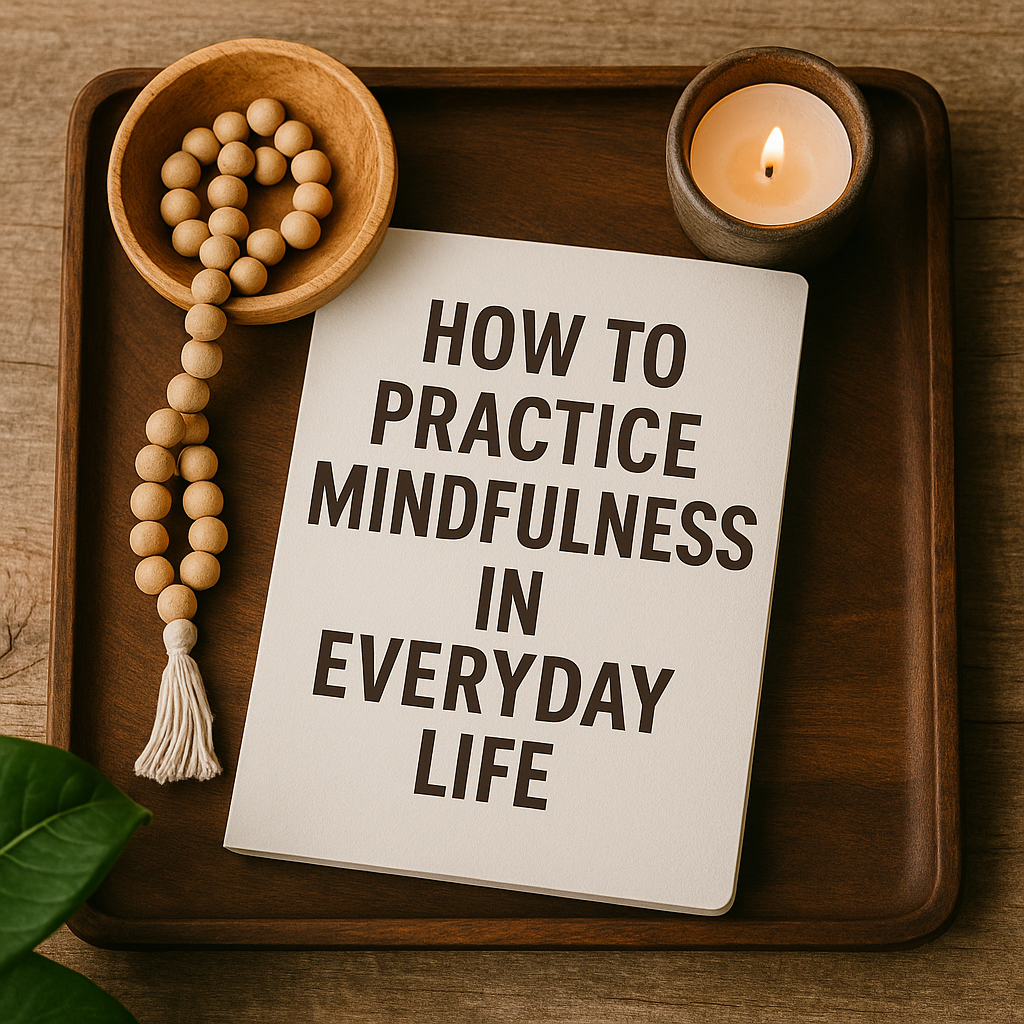Mindfulness isn’t just about meditation or sitting cross-legged in silence. It’s about learning how to be present—fully aware of your thoughts, body, emotions, and surroundings, without judgment. In a world full of distractions and rushing, mindfulness offers a path back to clarity, calm, and control.
The best part? You don’t need to retreat to a mountaintop or dedicate hours a day to experience the benefits. With a few small shifts, you can practice mindfulness in your everyday routine—at work, at home, while eating, walking, or even during stressful moments.
What Is Mindfulness?
Mindfulness means paying attention on purpose. It’s about living with awareness instead of operating on autopilot.
When you’re mindful, you:
- Observe what’s happening right now, not what happened yesterday or what might happen tomorrow
- Acknowledge thoughts and emotions without immediately reacting to them
- Tune in to your body and senses
- Respond to life with intention, not impulse
Mindfulness can help reduce stress, improve focus, deepen relationships, and create more emotional balance in daily life.
1. Start With Just One Minute
The idea of becoming “mindful” can feel overwhelming—but it doesn’t need to be.
Begin with something simple: 1 minute of conscious breathing.
Try this:
- Sit comfortably, close your eyes, or soften your gaze
- Inhale deeply through your nose for 4 seconds
- Hold for 2 seconds
- Exhale slowly for 6 seconds
- Repeat for 60 seconds, focusing only on your breath
Even a single minute can help reset your nervous system and bring clarity.
2. Add Mindfulness to Daily Routines
You don’t need extra time—you just need presence.
Turn routine tasks into mindfulness rituals:
- Brushing your teeth: Feel the motion, smell the toothpaste, notice your hand movements
- Making coffee: Listen to the bubbling, smell the aroma, notice the warmth of the cup
- Washing dishes: Feel the water on your hands, listen to the clinking sounds, breathe slowly
- Walking: Pay attention to your steps, the contact with the ground, and your surroundings
These ordinary moments become anchors, helping you live more intentionally.
3. Be Present During Conversations
Mindfulness isn’t just internal—it also improves how you connect with others.
In your next conversation:
- Put your phone away
- Make eye contact
- Listen without planning your reply
- Notice tone, body language, and emotion
Mindful listening deepens relationships and reduces misunderstandings. It also reminds others (and yourself) that presence is a gift.
4. Respond, Don’t React
Mindfulness gives you space between stimulus and response.
When you’re triggered:
- Pause
- Take 3 deep breaths
- Notice the sensations in your body
- Label the emotion (anger, fear, stress, frustration)
- Choose how to respond—not from habit, but from intention
This practice can transform conflict, reduce anxiety, and improve decision-making.
5. Try a Simple Body Scan
This is a powerful way to connect with your body and release built-up tension.
Steps:
- Sit or lie down comfortably
- Close your eyes and bring attention to your toes
- Slowly move upward—feet, ankles, calves, knees, thighs, and so on
- At each point, observe any sensations, temperature, or tension
- Breathe into each area gently before moving to the next
Doing this for even 5–10 minutes daily can improve sleep, reduce stress, and build mind-body awareness.
6. Use the “STOP” Method in Stressful Moments
When you feel overwhelmed, this mindfulness tool helps you reset quickly:
- S – Stop what you’re doing
- T – Take a breath
- O – Observe what you’re thinking, feeling, and sensing
- P – Proceed with intention
This brings clarity and calm in high-pressure situations, especially at work or in relationships.
7. Journal With Mindful Prompts
Writing is a form of mindfulness. You focus your awareness on the present moment and express without editing.
Try prompts like:
- “What do I feel right now, and where do I feel it in my body?”
- “What am I grateful for in this exact moment?”
- “What would I like to let go of today?”
Just 5 minutes of journaling per day can increase emotional resilience and clarity.
8. Create a Mindful Evening Routine
How you end your day matters. Create a nighttime habit that brings closure and reflection.
Ideas:
- Unplug from screens 30–60 minutes before bed
- Dim the lights and light a candle
- Reflect on 3 things you’re thankful for
- Do a 5-minute meditation or breathwork session
- Stretch gently and focus on how your body feels
Ending the day mindfully can improve your sleep and set the tone for a peaceful tomorrow.
Living Mindfully Is Living Fully
Mindfulness isn’t about escaping reality—it’s about fully experiencing it. It doesn’t require perfection, long sessions, or silence. All it asks is that you show up for your life, moment by moment.
Start small:
- Choose one practice from this article
- Try it once today
- Reflect on how you feel
With time, mindfulness becomes a way of life—a way to meet every moment with attention, intention, and grace.
